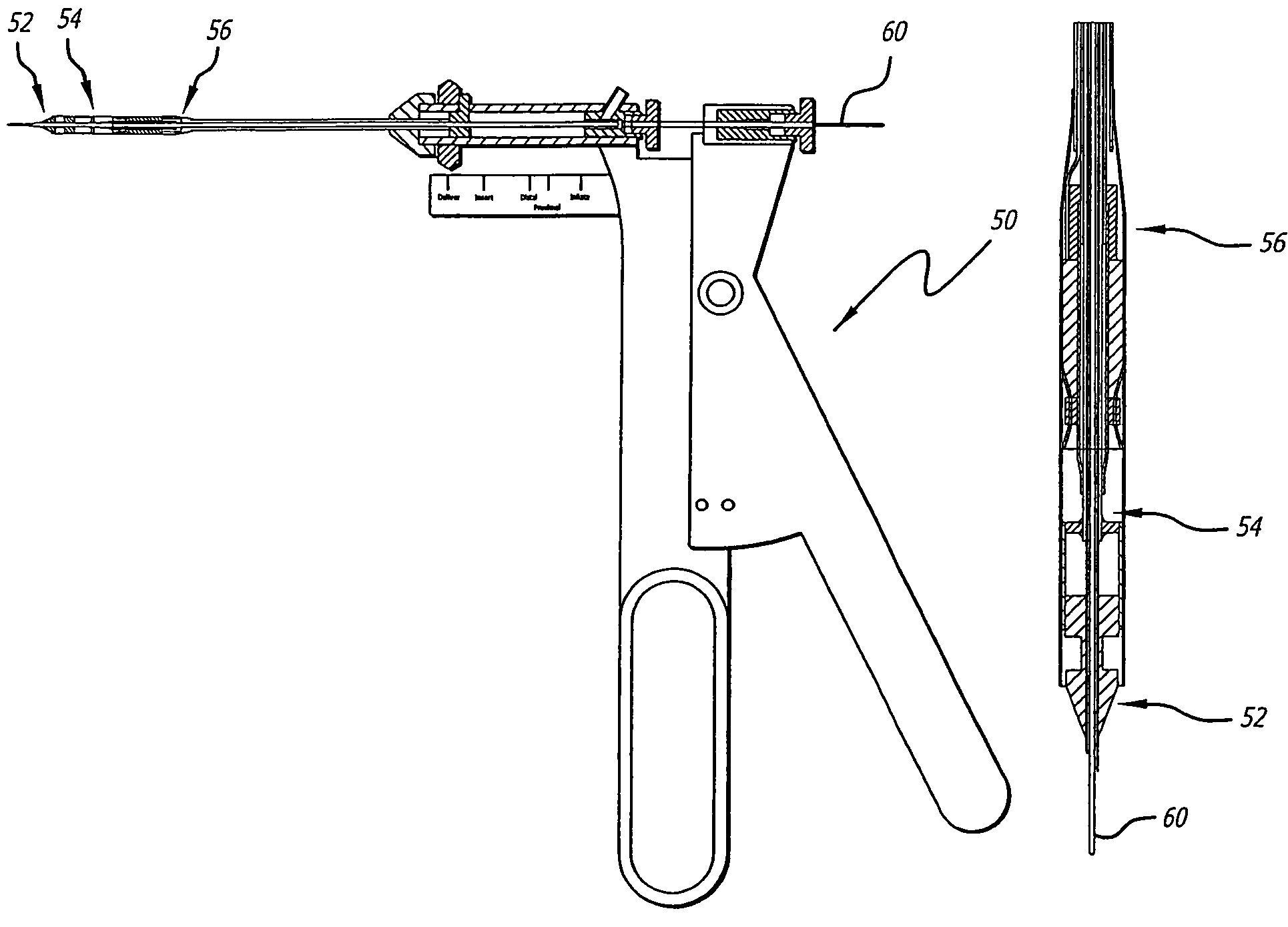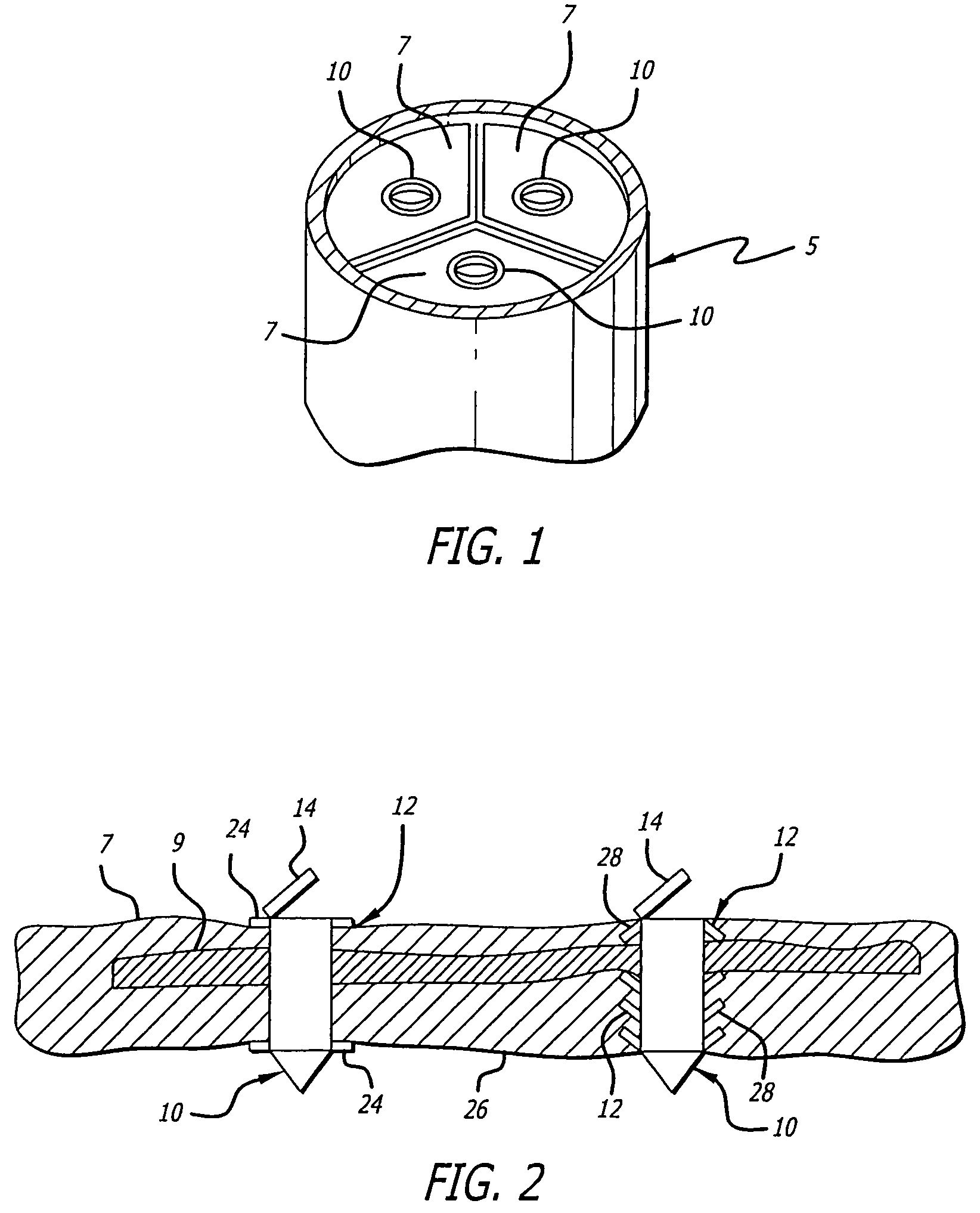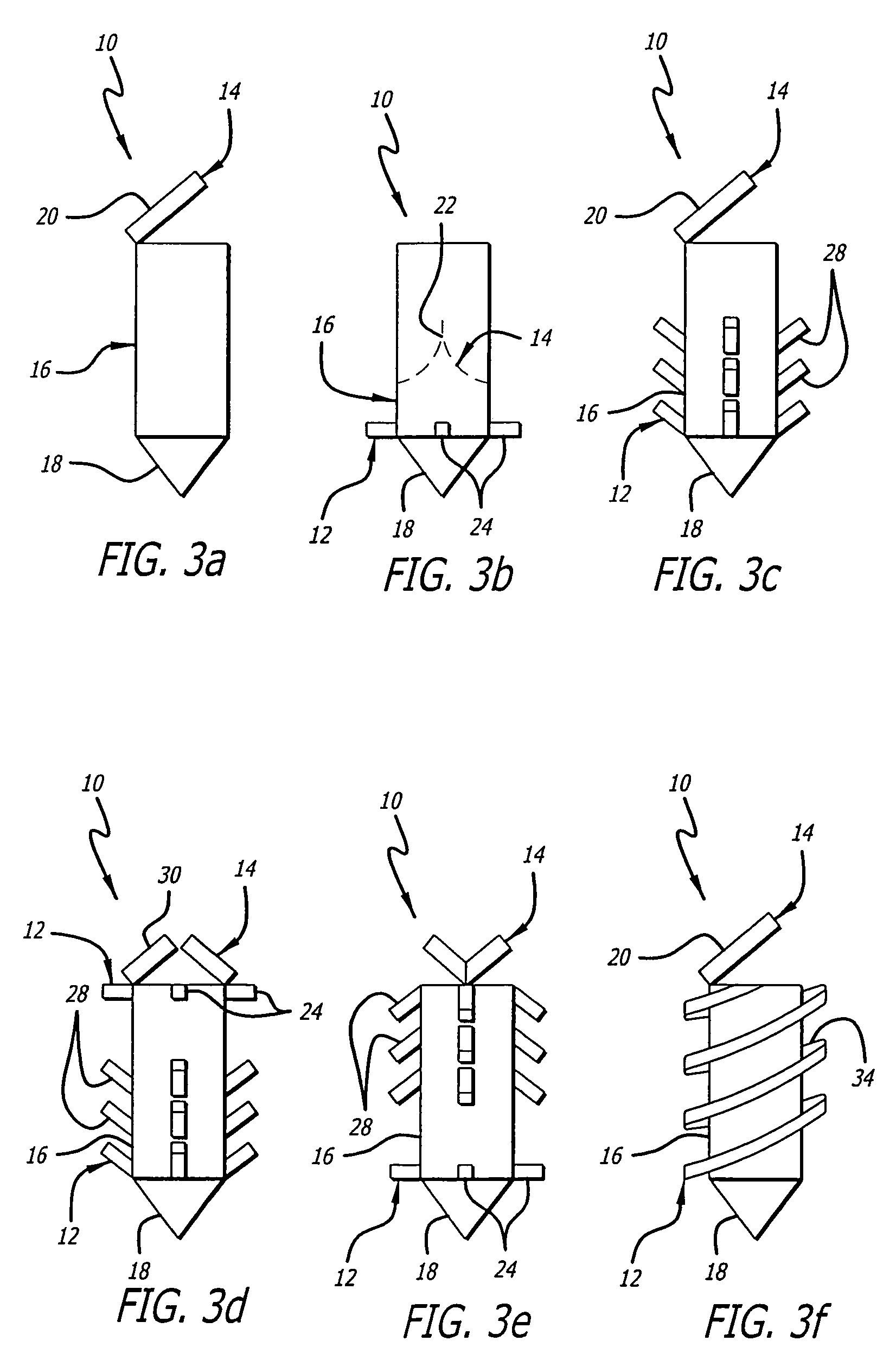Delivery device for leaflet valve
a delivery device and leaflet valve technology, applied in the field of leaflet valve delivery devices, can solve the problems of valve leaflets, heart failure and death, thickening, and subsequent immobility or reduced mobility,
- Summary
- Abstract
- Description
- Claims
- Application Information
AI Technical Summary
Benefits of technology
Problems solved by technology
Method used
Image
Examples
Embodiment Construction
[0054]Referring now to the Figures, and first to FIG. 1, there is shown a native tricuspid valve 5 with a valve implant 10 of the present invention installed in each of the three leaflets 7 of the tricuspid valve 5. The valve implants 10 are shown in an open position to demonstrate that blood is allowed to flow through the valve implants 10, in one direction, even though the native tricuspid valve 5 remains closed. These valve implants 10 would similarly work with a native bicuspid valve, unicuspid valve or quadracuspid valve.
[0055]FIG. 2 demonstrates the positioning of a valve implant 10 in a native leaflet 7. The leaflet 7 is shown as having calcified tissue 9, characteristic of a stenosed valve. Notably, the valve implants 10 have been inserted through the calcified tissue 7. Also notable is that there may be more than one valve implant 10 inserted into a single leaflet 7 if additional flow capacity is desired. Alternatively, though not shown, the valve implant 10 may be installe...
PUM
 Login to View More
Login to View More Abstract
Description
Claims
Application Information
 Login to View More
Login to View More - R&D
- Intellectual Property
- Life Sciences
- Materials
- Tech Scout
- Unparalleled Data Quality
- Higher Quality Content
- 60% Fewer Hallucinations
Browse by: Latest US Patents, China's latest patents, Technical Efficacy Thesaurus, Application Domain, Technology Topic, Popular Technical Reports.
© 2025 PatSnap. All rights reserved.Legal|Privacy policy|Modern Slavery Act Transparency Statement|Sitemap|About US| Contact US: help@patsnap.com



